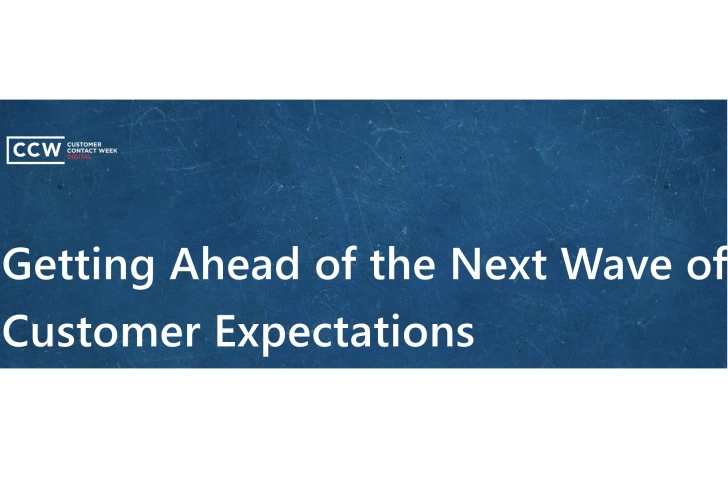4 Ways We Know Consumer Behavior Has Changed, Based on Search History
Add bookmark
Customer behavior has clearly evolved over the past year, and although we often talk about the new digital customer experience, we don’t always discuss the values behind these new behaviors. Sure, customers adopted digital to replace their in-person routines during a time when leaving the house felt unimaginable. But, after a year of growth and innovation, customers also adopted a new set of values and routines that sparked the onset of these new preferences. In order to better support these customers, it’s important to identify the key attitudes and mindsets of the modern customer.
To understand the path of this new set of customers, we can look at something pivotal in their current digital journeys: their search history. Here we break down 4 key changes Google has identified in customers’ search history to better interpret customer behavior and recognize underlying values and concerns:
Digital Inspiration
Customers have gotten creative. With the popularization of social media like YouTube and Pinterest, customers now utilize the internet for much more than purchasing. Individuals are finding inspiration all over the web, and they’re flocking online to replicate the window-shopping experience. According to Google, terms like ‘unique gifts for’ and ‘house ideas’ saw massive global growth in 2020. Additionally, customers are finding this inspiration on all platforms, and Google states that 70% of consumers reported buying from a brand after seeing it on YouTube.
With this information, Google advises companies to show up in these decision-making moments. This advice is essential for the service experience as well; because customers are taking unique and individual journeys, and interacting with brands in different ways, companies must be able to identify their initial thought process. If companies can become more mindful of the steps customers actually take to get to them, they can better recognize their intent and offer a more personalized experience. For example, if a customer’s initial intention is seeking inspiration for a gift, the agent could recognize this before they ask for it to be delivered to a different address, or ask about return options. Offering more tailored advice can give the customer quicker solutions and more thoughtful support.
Values are Critical
Individuals have also become more value-driven. Since the beginning of the pandemic, customers have overwhelmingly supported small businesses after months of shutdowns. Beyond this, there is also a greater emphasis on ethical consumerism overall — which is evident in customers’ search histories. Terms like ‘ethical brands’ and ‘ethical online shopping’ grew 300% and 600%, respectively, in 2020.
In terms of customer service, this trend is interesting, as it comes at a time where the agent’s role is evolving. Rather than a traditional support position, the evolving customer experience landscape has opened up an opportunity for agents to maintain a greater voice, acting as a brand representative or advisor over a ‘fixer’. Because of this, companies should take this moment to establish agents as brand experts and encourage them to share their values with every interaction. If companies can establish a culture that promotes values like sustainability and ethical consumption, they can ensure that agents are not only able, but excited to share these goals with customers.
The Age of Convenience
At the height of retail closures and mass shut-downs, customers relied on convenience measures like curbside pick-up and online ordering. These offerings enabled customers to continue with their typical routines, in a safe yet seamless way. In 2020, searches for ‘along my route’ increased by 1,000% and ‘curbside pickup’ by 3000%.
Confirming that, although they may have been seen as a luxury during the pandemic, these conveniences have become a new part of customers’ regular routines. Further, convenience will remain a deciding factor in many customers’ purchasing processes and companies must now prioritize measures that allow for more flexibility and ease of use.
From a support perspective, this is a positive — it means that all of the effort companies have put in to transform their digital customer experience is paying off. Convenience measures are becoming a differentiator for service experiences, and companies offering an entirely seamless support option will continue to be successful. It also means that companies must continue to optimize their digital offerings to establish a hybrid service approach. Because customers are clearly working across multiple channels when interacting with a brand, companies must be able to recognize customers across their journey and support them at every touchpoint.
Unpredictability Sparks Demand
The last search trend Google identified is unpredictability. This shouldn’t come as a surprise, the pandemic shifted our perspective and turned many people’s worlds upside down. Losing our sense of normalcy was obviously difficult, and it left many in a constant state of unpredictability. But, it wasn’t always a bad thing, people were able to adopt new hobbies, and spend time with family. With this, Google saw increases of up to 600% in searches for things like patio heaters and candle-making kits.
Though these searches may seem trivial or random, Google notes that these rises indicate a level of unpredictability that will drive more dynamic demand. To counter these unpredictable influxes, companies must prioritize data in their service strategies. Because unpredictability will remain a factor for the foreseeable future, brands must be equipped to handle a sudden shift in demand. This is true for customer service as well; companies, and their agents, must be prepared to handle evolving customer cases, sudden increases in volume, and new customer concerns. By prioritizing data, companies can recognize these moments of unpredictability well before they occur.
Photo by Caio PEXELS























